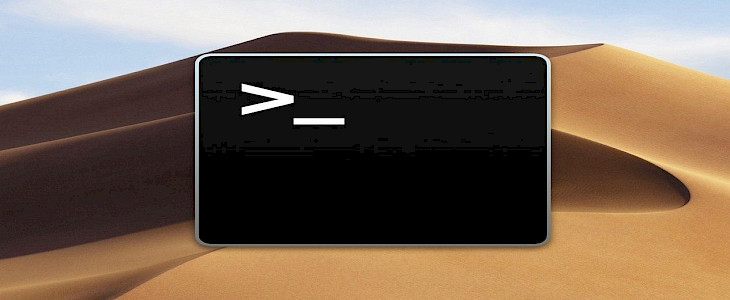
Today we had brought to you something different, something unique, something interesting. So, without further ado. Let’s begin.
What is Terminal?
Terminal or Command Line Interface(CLI) is the first layer of process management in a computing device that a user can directly access. If your macOS is a bungalow then the terminal is the foundation on which everything is standing.
People use terminals for one and only one reason.
It is the safest and easiest way to make things happen in any computation device.
So, put your learning caps on and let us learn about 10 macOS terminal commands that you should know.
How to open Terminal?
Open your MacBook and log into it.
- Click the “Launchpad” icon located in the dock.
- Type “Terminal” and search.
Or,
- Open your MacBook and log into it.
- Open the “Finder” function.
- Go to “Application” and look for “Utilities Folder”, click it.
- Now locate the Terminal and open it.
1) mkdir <folder name>
Short for Make a directory. This command is used to create a new, empty folder in your Macbook. You can also provide a location for the new folder by adding ‘/location’.
Example:- mkdir <today> “/drive d/ personal/”
2) cd
Short for Change Directory. This command is used to open a new folder and scrape the old, previously opened folder.
Example:- cd “<today>/<tommorow>”
3) open <file name>
As you can guess, it is used to open a file view any contents of the file directly on the terminal.
Example:- open <personal notes> “<today>”
4) rmdir <folder name>
Short for Remove a directory. This command can be used to remove or permanently delete a folder from your system.
Example:- rmdir <today>
5) sudo
Short for Super user do. This command is used to elevate your user privileges so that you can directly control every folder under the administrator subhead.
Example:- sudo rm - R Today “drive c/ personal/ trip”
6) top
This command is used to see the stats of your MacBook. You can input this command and it will directly open all the processes and sub-processes that are running and how much resources they are consuming per unit time.
Keep in Mind:- These processes and sub-processes cannot be controlled using Terminal they run independently, to shut them down you have to access each one individually.
7) ~/Library/Caches/
Similar to the “tree” command we see in Windows. This command can be used to clear all the cache files and stop all the cache processes that are running in the background.
8) ping <server>
A networking command. This is used to find out the condition of your server. Ping command is a request for a status update. It will give you all the information like IP address, network connection status, etc.
Example:- ping <server> “LPS1828248-23OR8”
9) man
Short for Manual. This command opens a library that contains information about all the codes that are compatible with the Terminal. Every given command and its function are specified using a colon(:)
10) exit
As you might have guessed. This command is used to exit the Terminal.
And those were some of the basic Terminal commands you should know. We will be back soon with more great content. Till then, Stay tuned. Good Day!





